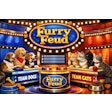
Numerous pet food marketing emails come through my inbox, and I’ve noticed how many of them demonize certain ingredients. One that appears frequently is "fillers." However, I recall that early on in my beat covering pet food, a pet nutrition researcher told me there was ultimately no such thing as a filler in pet food. He told me that formulators were so pressed to get what they wanted into the food that there wasn’t room for unnecessary ingredients just taking up space. Every ingredient was functional, in one way or another.
So, are fillers truly pet food fiends or just phantoms?
“What gets classified as a 'filler' is up to whomever makes the statement because it isn't a defined ingredient term by any regulatory body or nutrition text," Greg Aldrich, Ph.D., Kansas State University research associate professor, wrote in his Petfood Industry column. “This ambiguity seems to be an insidious asset. ‘No fillers’ has become a throw-away phrase meant to play on our perceptions and fears of being cheated and harmed.”
In the competitive landscape of pet food marketing, few terms carry as much negative weight as filler. Often used in advertising campaigns to differentiate premium brands from conventional products, the term has become shorthand for ingredients perceived as cheap, non-nutritious or otherwise unnecessary. But within the formulation labs and processing plants of the pet food industry, the reality is more nuanced and the term filler has little grounding in nutritional science.
When pet food brands promote themselves as "filler-free," they are not making a legally or scientifically defined claim. Instead, they are tapping into a consumer narrative that assumes certain ingredients, including corn, wheat, soy, beet pulp or rice bran, serve no purpose other than to bulk up the product. This marketing strategy has roots in broader food trends, particularly the clean label and grain-free movements, where ingredient simplicity and recognizability often take precedence over nutritional functionality.
History and use of the term filler in pet food
Digging into the etymology of the term, filler originally referred to secondary products from grain milling that were included in livestock diets, Aldrich noted.
“The list would include things like hulls, husks, chaff, cleanings, weeds, dust and stalks,” he wrote. “Interestingly, these items are specifically defined ingredient parts that one could actually claim their food does or does not possess. With a few exceptions, these items haven't been used in mainstream pet foods for decades.”
To the contrary, many ingredients that actually do appear in pet food yet are called fillers actually contribute significantly to a pet food's nutritional profile or functional performance. Beet pulp, for instance, offers fermentable fiber that supports gut health. Corn and rice deliver highly digestible carbohydrates and essential amino acids. Even something that seems low in nutritional value, such as soybean hulls, can lower caloric density in weight-management pet food formulations.
Moreover, these ingredients often play a vital role in the physical structure and processing of dry kibble. Extrusion relies on specific starch properties to achieve the desired texture, density and shelf stability. Ingredients dismissed as fillers can be essential to that process.
Despite this, the filler-free claim persists in marketing because it resonates with pet owners' emotional and aesthetic concerns. Brands promoting premium, high-meat or limited-ingredient diets may highlight the absence of fillers to signal purity, quality or superior nutrition, even when those claims lack scientific or regulatory backing.
This disconnect between marketing rhetoric and formulation reality creates challenges for pet food professionals. It not only skews consumer perceptions but can also pressure formulators to avoid cost-effective, functional ingredients in favor of trend-driven inclusions.
Bridging the gap between science and marketing may be difficult. However, helping pet owners bust the filler myth and understand the nutritional value of each ingredient could lead to more informed choices and a broader appreciation for the complexity behind pet food.
 'Cause this is filler, filler night... And no one's gonna serve you what the dog's about to bite... You know it's filler, filler night... You're formulating for your livelihood without a filler, filler, hooooowl!Tim Wall using DALL-E
'Cause this is filler, filler night... And no one's gonna serve you what the dog's about to bite... You know it's filler, filler night... You're formulating for your livelihood without a filler, filler, hooooowl!Tim Wall using DALL-E

















